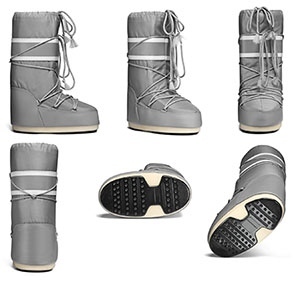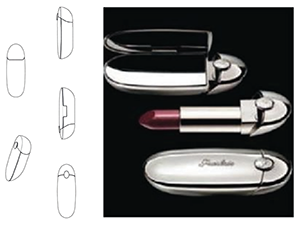3D trade marks in Europe - just how safe are your 3D registrations?
A couple of recent cases have again highlighted the possible inconsistencies and lack of guarantees that would give brand owners with three-dimensional marks the comfort they need concerning the protection and enforcement of their rights in the European Union.
The first case we are going to look at was where Volkswagen, which has been selling its well-known VW camper vans since they were originally conceived in the 1950s, wanted to rely on its earlier trade mark rights to prevent the registration of this mark:

Volkswagen own a number of trademark registrations for their Camper Van the most relevant being:

These were registered as a 3D trade mark at the EUIPO.
Another German company, by the name of European flipper/pinball factory, sought registration of the Cultcamper logo mark (figure 1, above) in respect of a range of goods and services including vehicles in class 12.
Unsurprisingly, Volkswagen opposed; however, the EUIPO Opposition Division held that the marks only had a low degree of similarity and thus rejected the opposition.
Undeterred, VW appealed arguing that the design element of the mark applied for was the dominant element and, perhaps with greater conviction, that the design element was virtually identical to the front on image in their 3D mark (the image shown to the top left of figure 2).
The Board of Appeal agreed and issued its decision overturning the first instance outcome.
A 3D trade mark should be deemed to lack distinctive character only:
if it does not depart significantly from the norms and customs of the sector concerned.
faced with the image of the mark applied for, the relevant English-speaking public in the EU will perceive that mark as another version of the earlier marks, rather than as a separate trade mark with a different commercial origin
It is noteworthy that the applicant neither contested the appeal nor sought to counter with a challenge regarding the validity of VW’s marks.
Keeping that point in mind let us look at another case decided just a couple of weeks ago regarding another well known 3D mark.

The background to this case was that Tecnica, an Italian manufacturer of ski wear and kit, had taken action against Zeiteneu, a German business, alleging that their footwear infringed its famous and iconic moon boot, shown on page 02, for which an EUTM registration had been obtained in 2011.
Not succeeding in obtaining a declaration of non-infringement during the proceedings before the courts in Venice, Zeiteneu then applied to revoke the registration at the EUIPO.
In respect of footwear in class 25 the Cancellation Division agreed that the mark should be declared invalid, a decision which was upheld by the First Board of Appeal. As a result, a further appeal was filed by Tecnica up to the General Court which issued its judgment on 19 January 2022.
The General Court came back to the same central point raised in both the Guerlain lipstick (see figure 4, below, and our article on this 3D mark case reported in the September 2021 issue of our newsletter: http://dycip.com/guerlain-lipstick), and the Cultcamper cases, namely, that:
“only a three-dimensional mark, consisting of the appearance of the product itself, which departs significantly from the norm or customs of the sector” (para 88) can possess sufficient distinctive character and thus be registrable.

Whilst this now seems to be the accepted test, we wonder whether there is an inconsistency here.
What is the sector here? Is it footwear in general, or is it the very specific and narrow range of “after-ski boots”? The court decided the latter. That is probably right. We have seen a range of fashions on display at INTA and other trade mark conferences over the years; however, the moon boot has yet to make an appearance. What is concerning then is that the court then went on to hold that the relevant consumers were not just skiers (who might have a higher level of attention when buying skiwear, but instead they deemed them to be the general public in all the EU member states. As such, they concluded, relevant consumers would have an average level of attention.
One wonders if they had actually applied a more likely commercial test, that is to say with skiers likely to be the only purchasers of “after-ski boots”, whether they would then have reached the same conclusion.
Accordingly, the General Court upheld the decision that the mark lacked distinctiveness for class 25 goods with…“the shape of the contested mark corresponds to the common shape of after-ski boots, which generally consist of a high shaft, often in a light synthetic material, with soles and laces” (para 98).
It is notable that Tecnica had been successful in pursuing copyright claims based on its boot design against third parties in the Italian courts.
So what is the take home point?
In short
These cases serve to remind us, following a long list of other high profile failures including, for example, the Voss water bottle, about the perils of relying on 3D trade mark rights alone and that clients with such marks should consider what other forms of IP protection might also be available to strengthen their rights as fully as possible. We are finding that for such marks trade mark registration is just one of the building blocks to be used, increasingly, along with registered designs.
